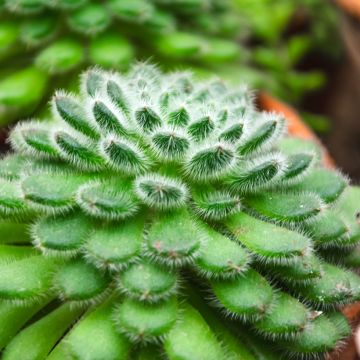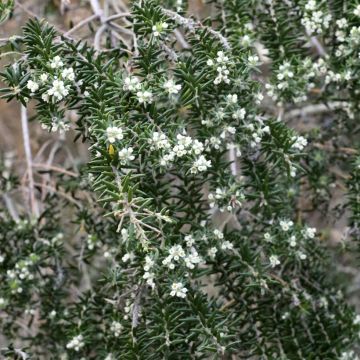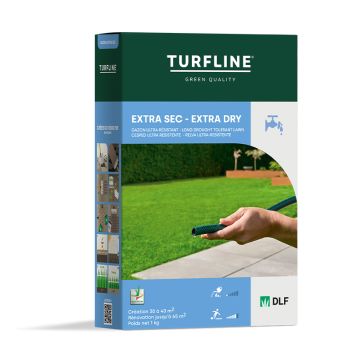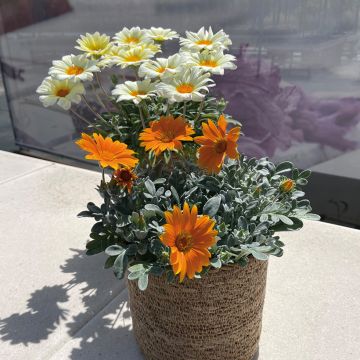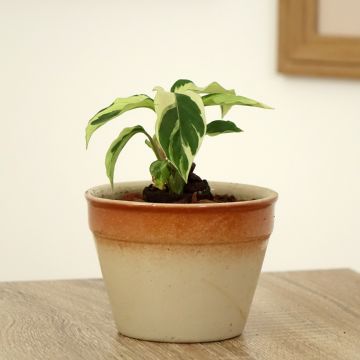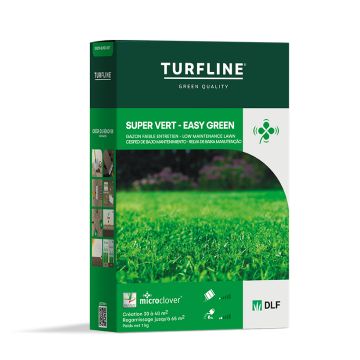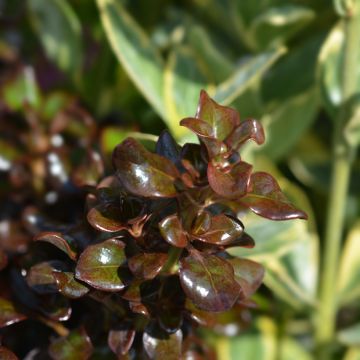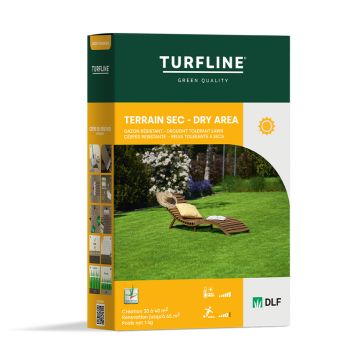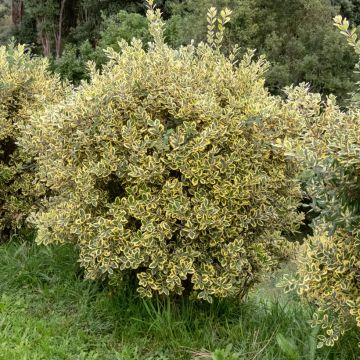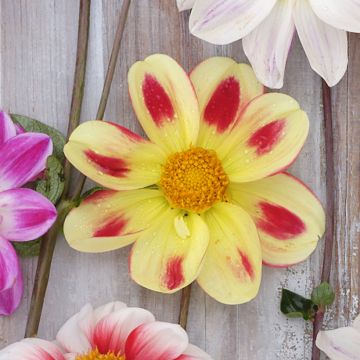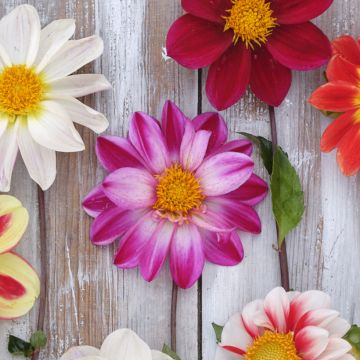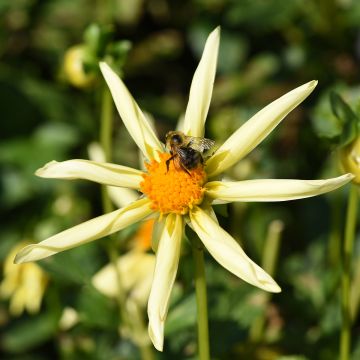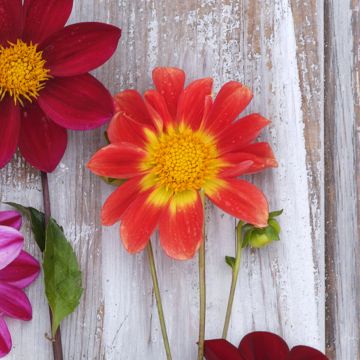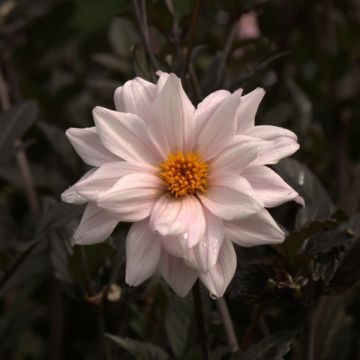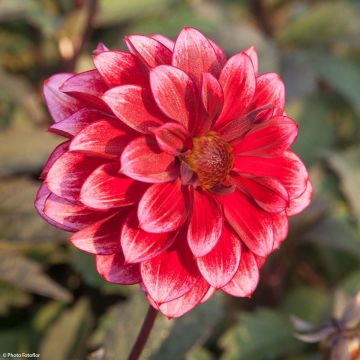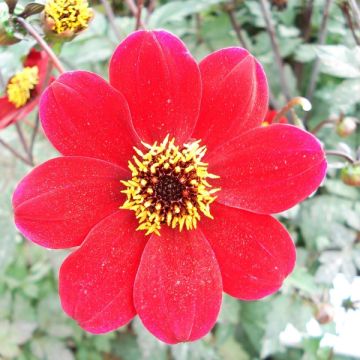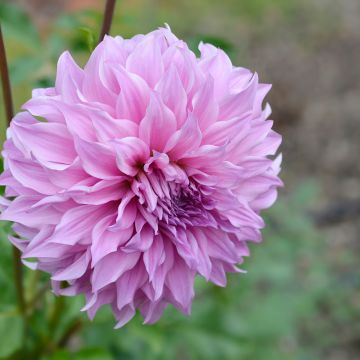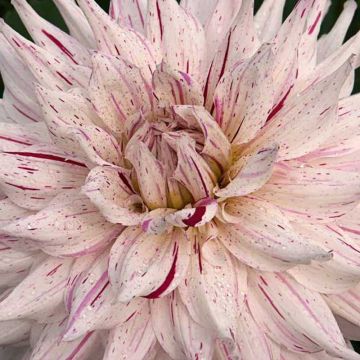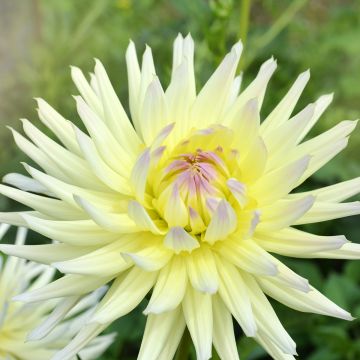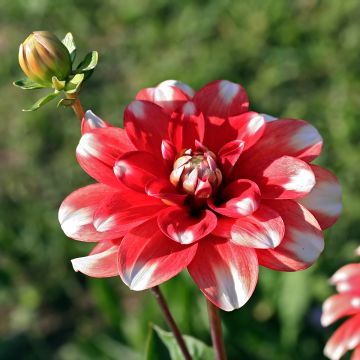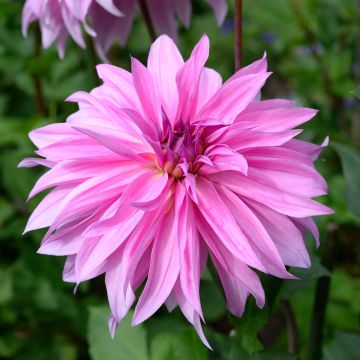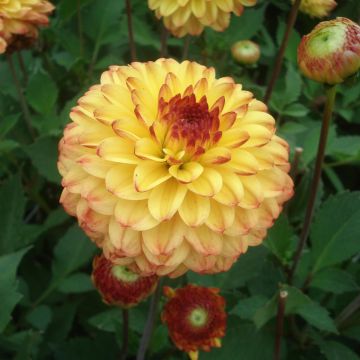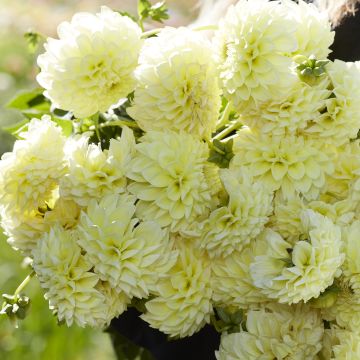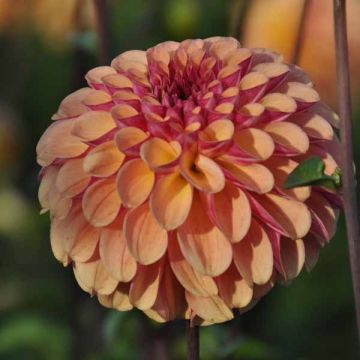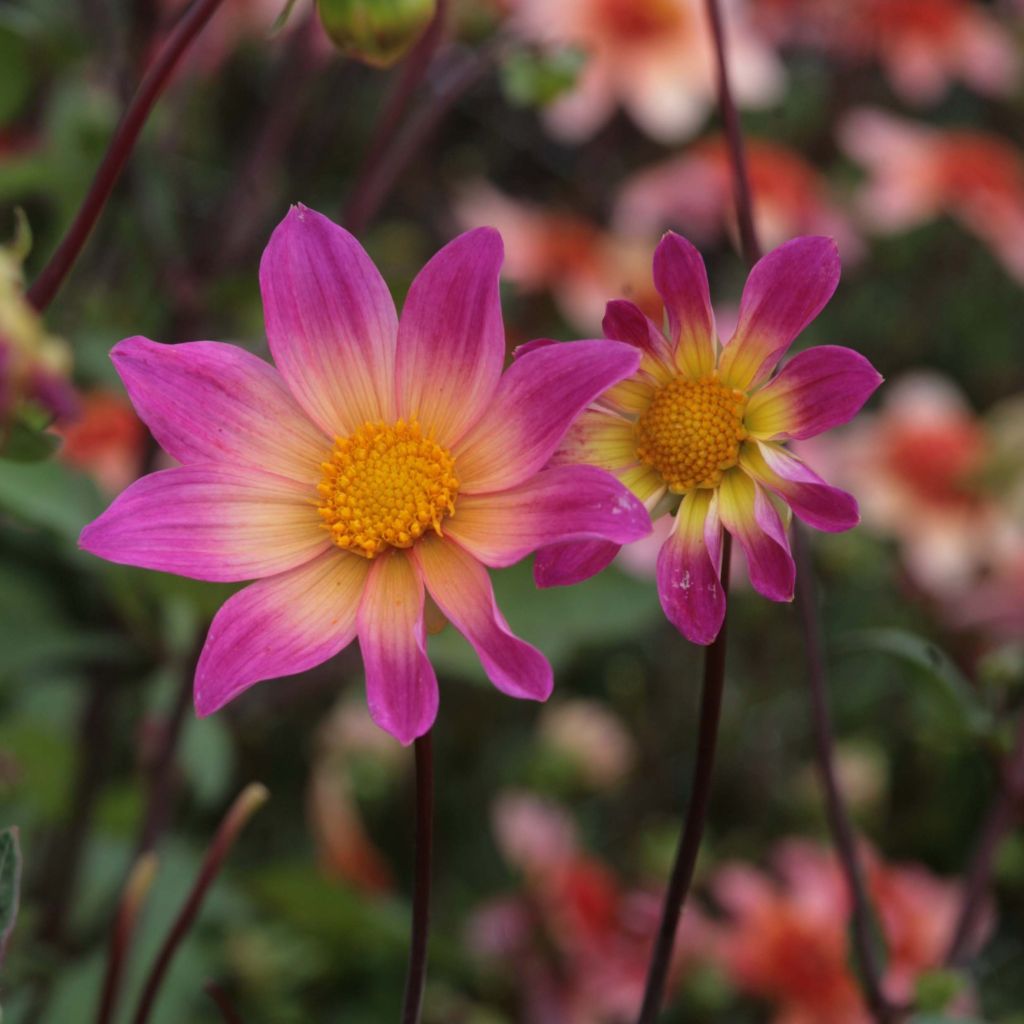

Dahlia Bright Eyes
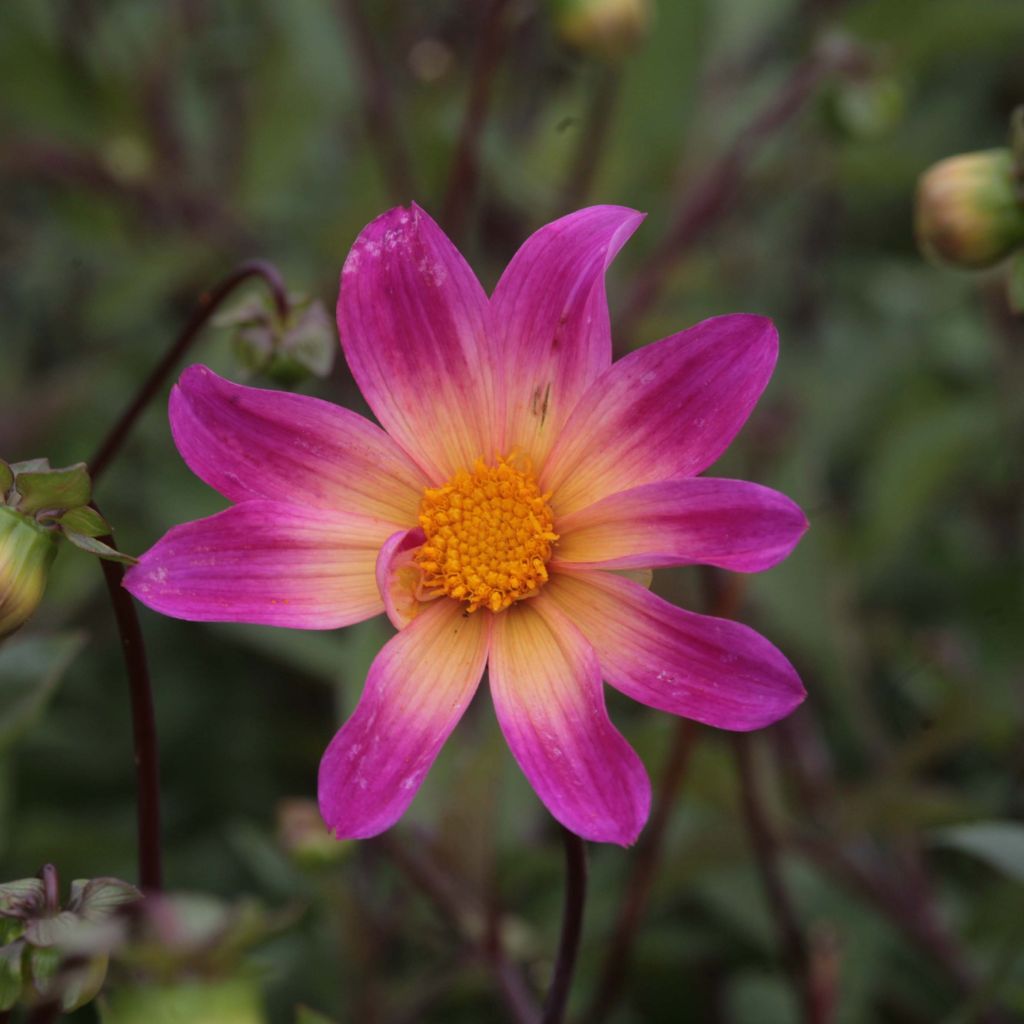

Dahlia Bright Eyes
Dahlia Bright Eyes
Dahlia Bright Eyes
Dahlia
Fast delivery and very well-protected package. Healthy and generous rhizomes; I can't wait to start them and see them bloom quickly.
Ian, 12/04/2021
Why not try an alternative variety in stock?
View all →This plant carries a 6 months recovery warranty
More information
We guarantee the quality of our plants for a full growing cycle, and will replace at our expense any plant that fails to recover under normal climatic and planting conditions.
From €7.90 for pickup delivery and €6.90 for home delivery
Express home delivery from €8.90.
Does this plant fit my garden?
Set up your Plantfit profile →
Description
The Dahlia 'Bright Eyes' is a stunning variety of landscape Dahlia with a unique personality, both very natural and brilliant: at the top of its dark stems sway large single and tricoloured flowers, with intense fuchsia pink, illuminated by an almost white halo around a beautiful golden heart. They stand out beautifully above gorgeous dark green foliage, blooming from July to November, for a constantly renewed visual pleasure. It will easily find its place in a perennial or low bush border, and its flowers are gorgeous in a country bouquet.
Dahlias are part of the Asteraceae family and are initially from the high plateaus of Mexico. Currently, the approximately 25,000 horticultural varieties created by humans have invaded, to our great pleasure, gardens worldwide. They are herbaceous plants perennial by their underground tubers that rest during the winter.
The 'Bright Eyes' variety was registered in 1981 the United States. It is a Dahlia classified in the 'landscape' category, characterised by large single flowers. The flowering plant will reach approximately 60-70 cm (24-28in) in height and 50 to 60 cm (20 to 24in) in width. The single flowers of 'Bright Eyes' have a diameter of about 8 cm (3in). The nine outer ligules, which form a corolla, have a vibrant colour that evolves slightly depending on the maturity of the head. Their almost white base at the opening gradually tints with golden yellow, contrasting with a wide fuchsia-pink border. The tiny fertile flowers at the centre make up a disc of golden yellow colour—the flowering repeats from July until the frosts. The habit is bushy and erect. The branching stems are hollow, and the leaves are opposite, ternate, dividing them into 3 or 5 very toothed lobes. The leaves are dark green, and the slender stems are tinged with purple.
To encourage repeat flowering, remove faded flowers, or even better, regularly make large colourful bouquets by combining them with other varieties. With its vibrant flowering, the Dahlia 'Bright Eyes' alone builds, and beautifully, the decor of a dedicated border or even that of a large glazed pot on the terrace. But it also blends well with the dark foliage of silver candles, Amaranthus Velvet Curtains, physocarpus. In borders, this Dahlia will create colourful and bright spots among perennials that bloom at the same time: for example, groups of Echinaceas, light blue or mauve Asters (Aster cordifolius, Aster turbinellus, Aster novi-belgii Marie Ballard...). It will be magnificent next to a Caryopteris or a Ceratostigma willmottianum. Its flowers are, of course, beautiful in bouquets.
As a star plant in borders and herb gardens, Dahlias confidently accompany the most beautiful flowers but are also appreciated alongside vegetable plants. In Mexico, this tuberous plant was first cultivated as a root vegetable for consumption. But its poor taste qualities have relegated it to the rank of ornamental plant.
Dahlia Bright Eyes in pictures
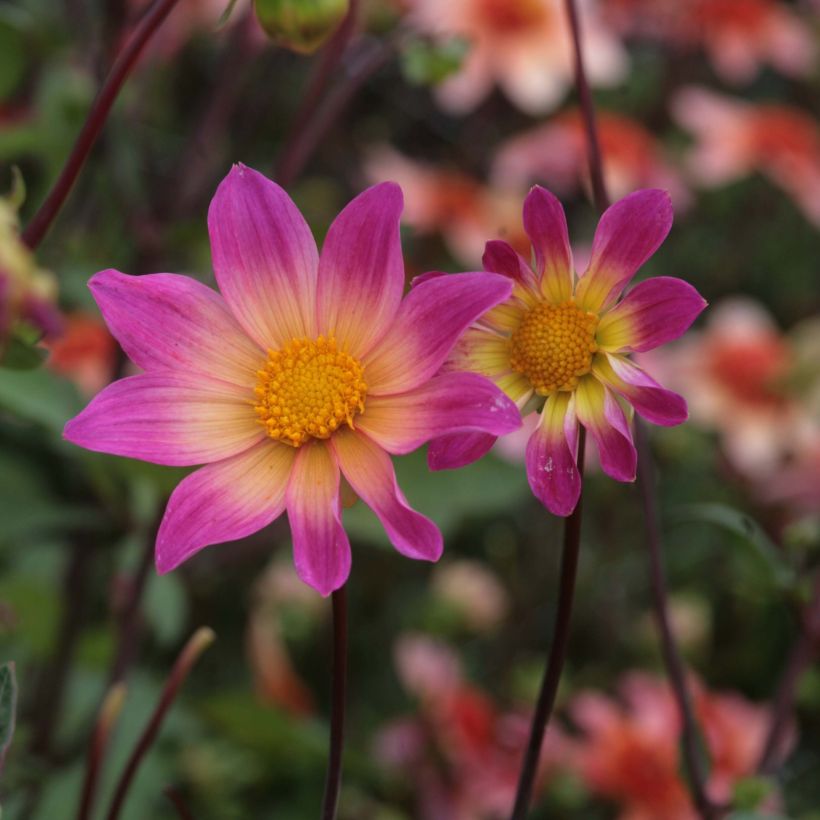

Plant habit
Flowering
Foliage
Botanical data
Dahlia
Bright Eyes
Asteraceae
Dahlia
Cultivar or hybrid
Other Landscape Dahlias
View all →Planting and care
The Dahlia 'Bright Eyes' is easy to grow in all regions. For abundant flowering, it is good to follow a few simple rules. Plant the tubers in a sunny location as soon as the last frost has passed. Rich, moist, and well-drained soil is perfect. However, stagnant moisture would promote tuber rot. Feel free to amend the soil with compost and sand if necessary. Work the soil deeply and enrich it, for example, with blood, fish and bone. Place your tuber and crumble the soil well to fill without air pockets. Your dahlia should be covered with about 6 cm (2in) of soil. At the end of planting, water thoroughly once and then repeat this watering regularly during the first six weeks to aid in rooting.
Dahlias are sensitive to cold, so they often need to be overwintered. In November, the first frosts cause the foliage to turn black, which is the time to dig them up. Carefully remove the tubers. Remove as much soil as possible. Let the foliage dry so that the tubers can replenish their reserves. Then cut the stems to 10 cm (4in). Spread your bulbs in a box of newspaper. Store them in a frost-free, dry, cool, dark place like a garage or attic. In milder regions with only a few days of frost per year and moderate frosts (-5 to -10 °C (23 to 14°F)), it is possible to leave them in place. In this case, cover the ground with a layer of leaves or straw for protection.
Planting period
Intended location
Care
-
, onOrder confirmed
Reply from on Promesse de fleurs
Dahlias
Haven't found what you were looking for?
Hardiness is the lowest winter temperature a plant can endure without suffering serious damage or even dying. However, hardiness is affected by location (a sheltered area, such as a patio), protection (winter cover) and soil type (hardiness is improved by well-drained soil).

Photo Sharing Terms & Conditions
In order to encourage gardeners to interact and share their experiences, Promesse de fleurs offers various media enabling content to be uploaded onto its Site - in particular via the ‘Photo sharing’ module.
The User agrees to refrain from:
- Posting any content that is illegal, prejudicial, insulting, racist, inciteful to hatred, revisionist, contrary to public decency, that infringes on privacy or on the privacy rights of third parties, in particular the publicity rights of persons and goods, intellectual property rights, or the right to privacy.
- Submitting content on behalf of a third party;
- Impersonate the identity of a third party and/or publish any personal information about a third party;
In general, the User undertakes to refrain from any unethical behaviour.
All Content (in particular text, comments, files, images, photos, videos, creative works, etc.), which may be subject to property or intellectual property rights, image or other private rights, shall remain the property of the User, subject to the limited rights granted by the terms of the licence granted by Promesse de fleurs as stated below. Users are at liberty to publish or not to publish such Content on the Site, notably via the ‘Photo Sharing’ facility, and accept that this Content shall be made public and freely accessible, notably on the Internet.
Users further acknowledge, undertake to have ,and guarantee that they hold all necessary rights and permissions to publish such material on the Site, in particular with regard to the legislation in force pertaining to any privacy, property, intellectual property, image, or contractual rights, or rights of any other nature. By publishing such Content on the Site, Users acknowledge accepting full liability as publishers of the Content within the meaning of the law, and grant Promesse de fleurs, free of charge, an inclusive, worldwide licence for the said Content for the entire duration of its publication, including all reproduction, representation, up/downloading, displaying, performing, transmission, and storage rights.
Users also grant permission for their name to be linked to the Content and accept that this link may not always be made available.
By engaging in posting material, Users consent to their Content becoming automatically accessible on the Internet, in particular on other sites and/or blogs and/or web pages of the Promesse de fleurs site, including in particular social pages and the Promesse de fleurs catalogue.
Users may secure the removal of entrusted content free of charge by issuing a simple request via our contact form.

































